 |
Projects
SB2 Cepheids
Classical Cepheids
Type II Cepheids
Papers
by category
by first author
by target
Visitors so far: 29913.
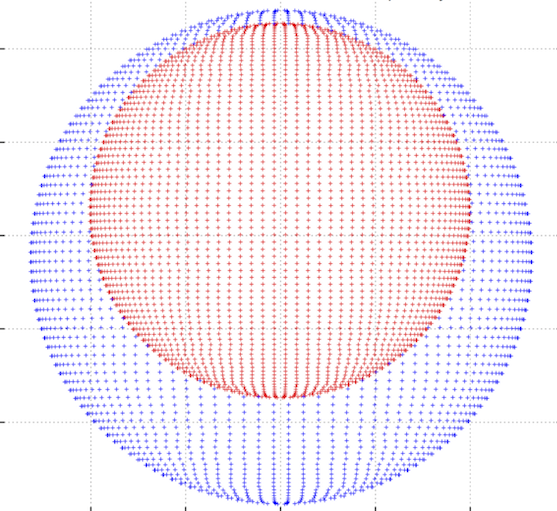
Relevant publication:
2016, A&A, 594, 92 (← click to see the publication at ADS/arXiv)
We present analysis of eclipsing binary star LL Aqr which contains a solar twin component. This is the first known star with properties of a solar twin existing in a non-interacting eclipsing binary, offering an excellent opportunity to fully characterise its physical properties with very high precision.
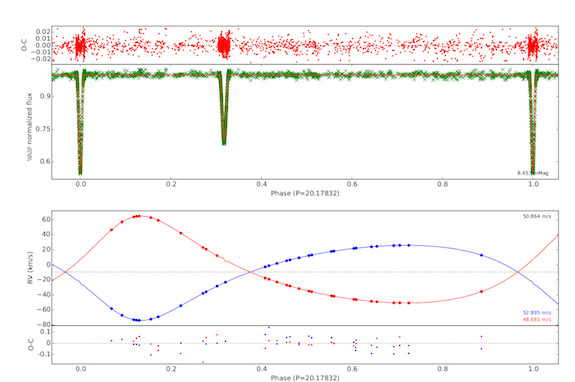 |
|---|
| Simultanous light curve (S-WASP) and radial velocity solution for LL Aqr. Observations - points, continous line - synthetic model. Model was calculated with the Wilson-Devinney program. |
We used extensive light curve from the Super-WASP project augmented by multi-band, archival photometry to derive photometric solutions and colors of components. Using high-resolution and high-precision spectrographs, HARPS and CORALIE, we determined radial velocities and an orbital solution with the Wilson-Devinney code. Spectra of both components were decomposed and we performed a detailed atmospheric LTE abundance analysis. The atmospheric chemical composition and metallicity of LL Aqr is very close to solar one.
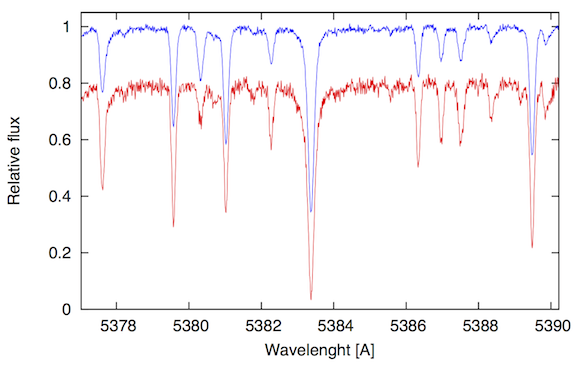 |
|---|
| Parts of decomposed and normalized spectra of the primary F9V component (upper blue line) and the secondary G3V component (bottom red line) - a solar twin - around strong absorption line FeI 5383.4 A. |
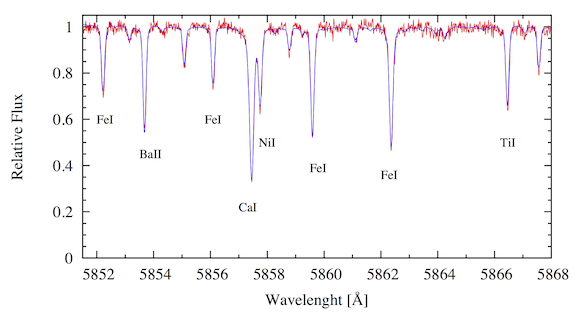 |
|---|
| A comparison of the decomposed secondary spectrum (red line, S/N = 90) with the solar spectrum (blue line, S/N = 700) taken by UVES with a similar resolving power. Some absorption lines are labelled. The spectra are very similar. |
LL Aqr consists of two main-sequence stars (F9 V + G3 V) with masses of M1 = 1.1949 ± 0.0007 and M2 = 1.0337 ± 0.0007 M_sun, radii R1 = 1.321 ± 0.006 and R2 = 1.002 ± 0.005 R_sun, temperatures T1 = 6080 ± 45 and T2 = 5703 ± 50 K and solar chemical composition M/H = 0.02 ± 0.05. The absolute dimensions, radiative and photometric properties, and atmospheric abundances of the secondary are all fully consistent with being a solar twin. The system is significantly younger that the Sun, with an age between 2.3 Gyr and 2.7 Gyr, which agrees well with the relatively high lithium abundance of the secondary, A(Li) = 1.65 ± 0.10 dex.
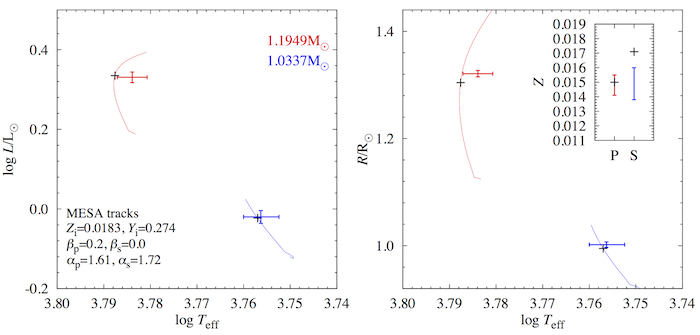 |
|---|
| The best fitting MESA tracks with element diffusion and allowing different values of mixing-length parameters for the models. Additional constraints were imposed on the models: αS ≥ 1.72, αS − αP ≤ 0.12 and |βP − βS| ≤ 0.4. Insert in the right panel shows comparison with observed metallicity abundance (P – the primary, S – the secondary). Position of both components are marked with errorbars. Small crosses denote position of the best fit in three dimensional space of parameters {Teff , L, R}. |
The resulting highly precise stellar parameters were used for a detailed comparison with PARSEC, MESA, and GARSTEC stellar evolution models. Both stars are cooler by about 3.5\sigma or less metal abundant by 5\sigma than predicted by standard sets of stellar evolution models. When advanced modelling was performed, we found that full agreement with observations can only be obtained for values of the mixing length and envelope overshooting parameters that are hard to accept. The most reasonable and physically justified model fits found with MESA and GARSTEC codes still have discrepancies with observations but only at the level of 1\sigma.